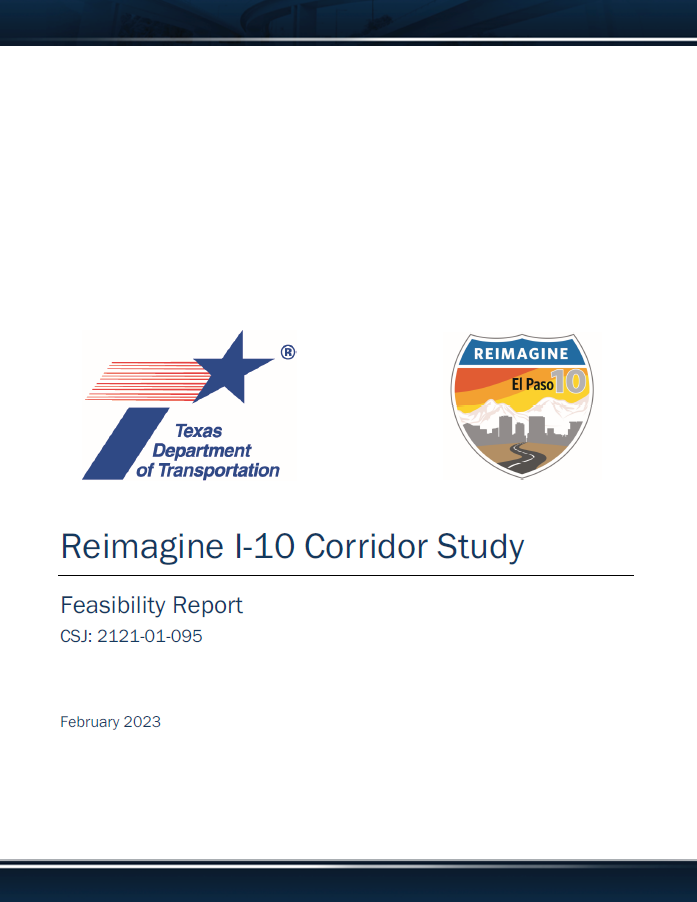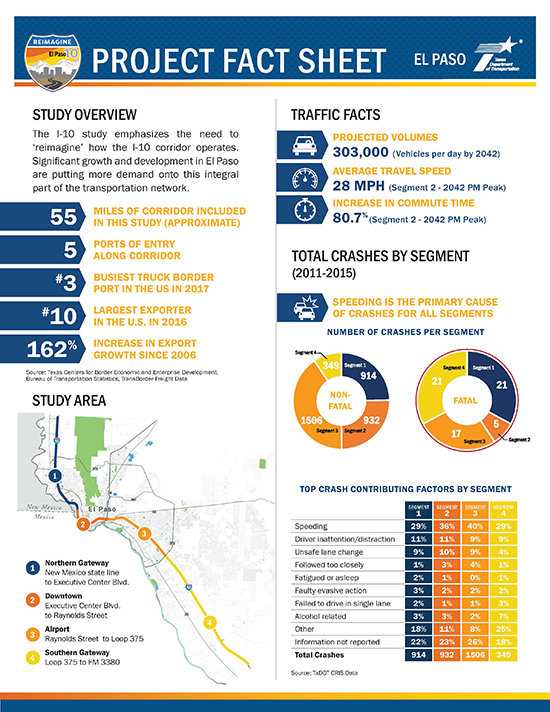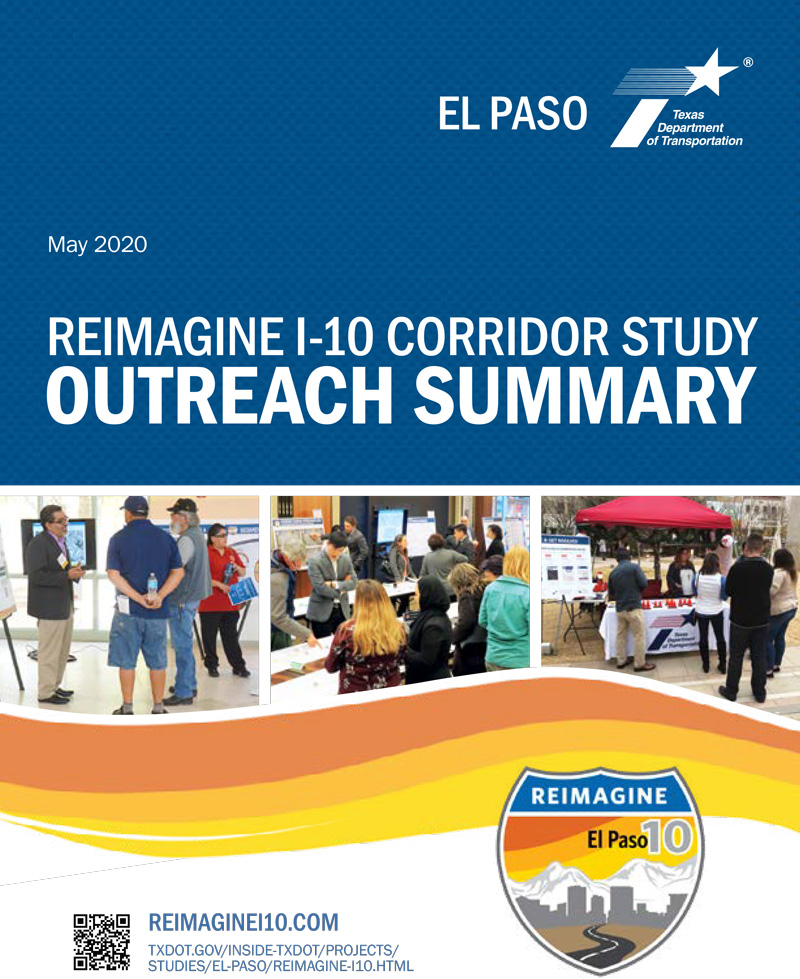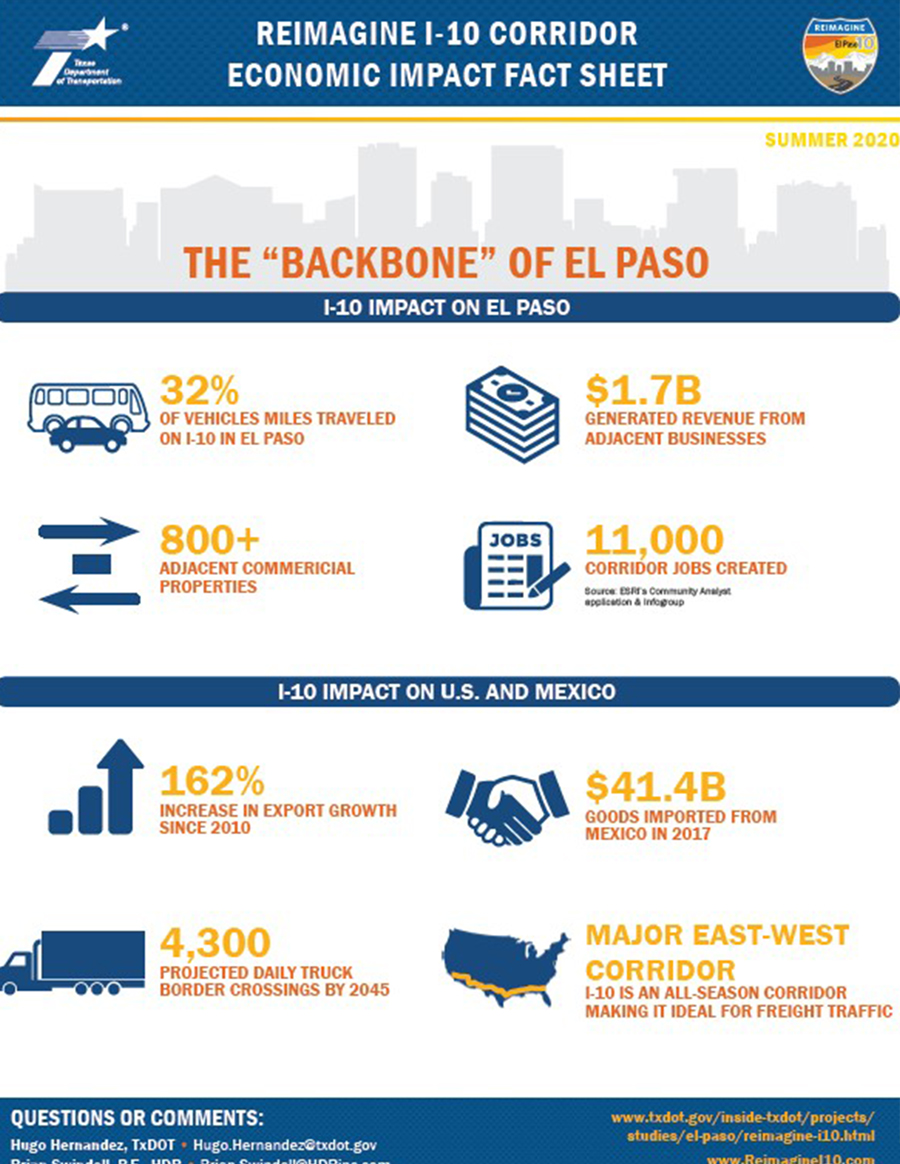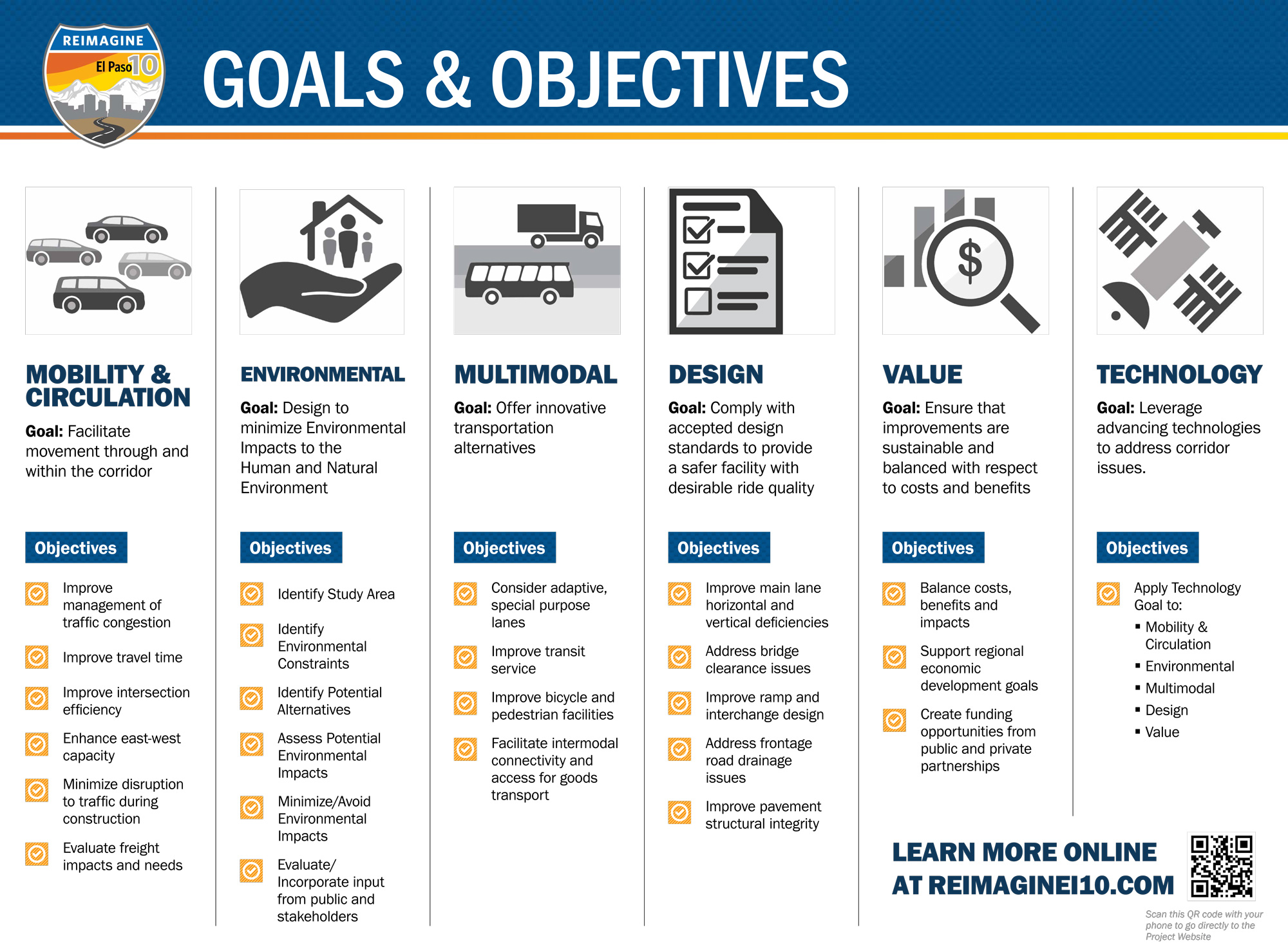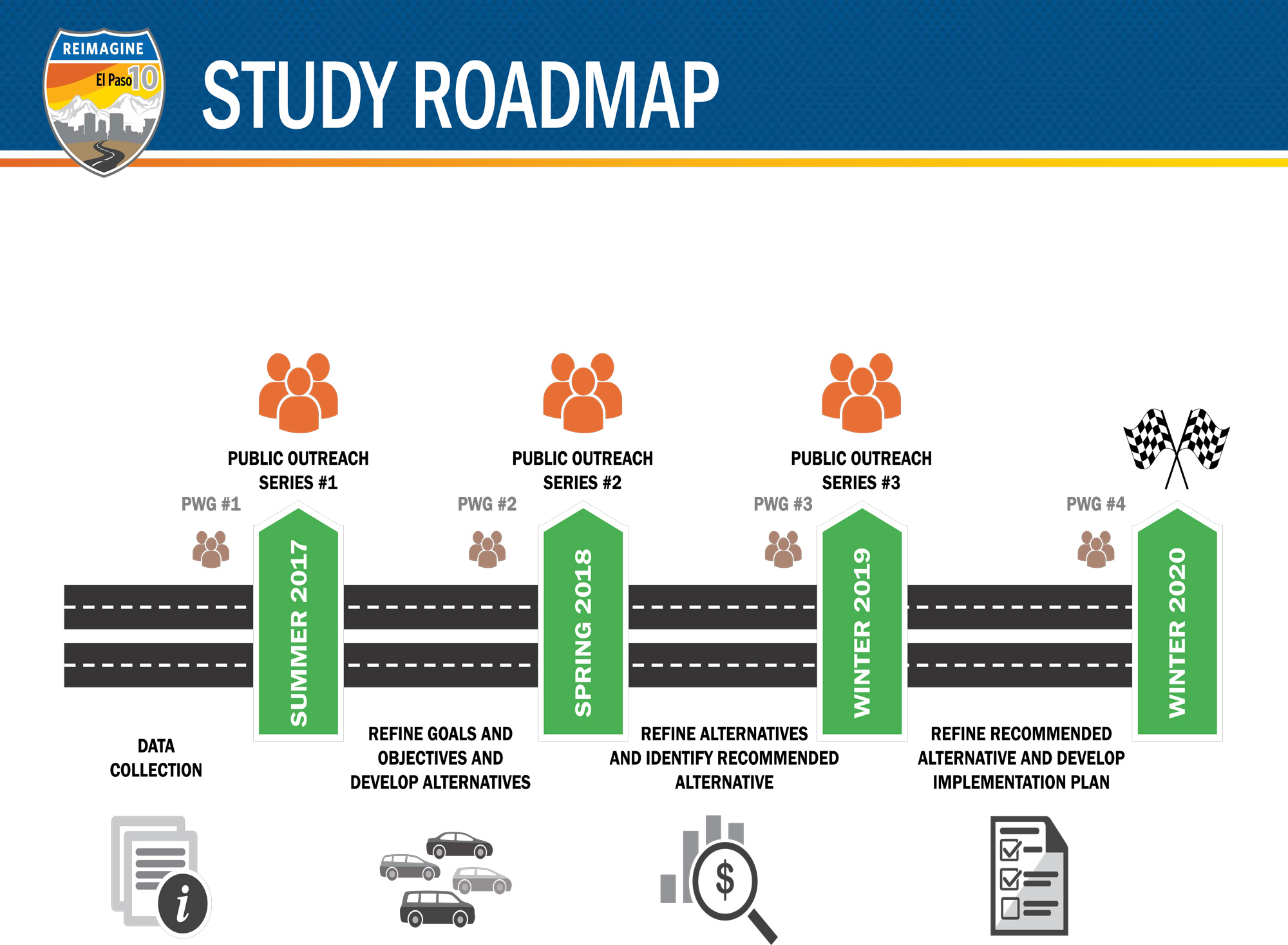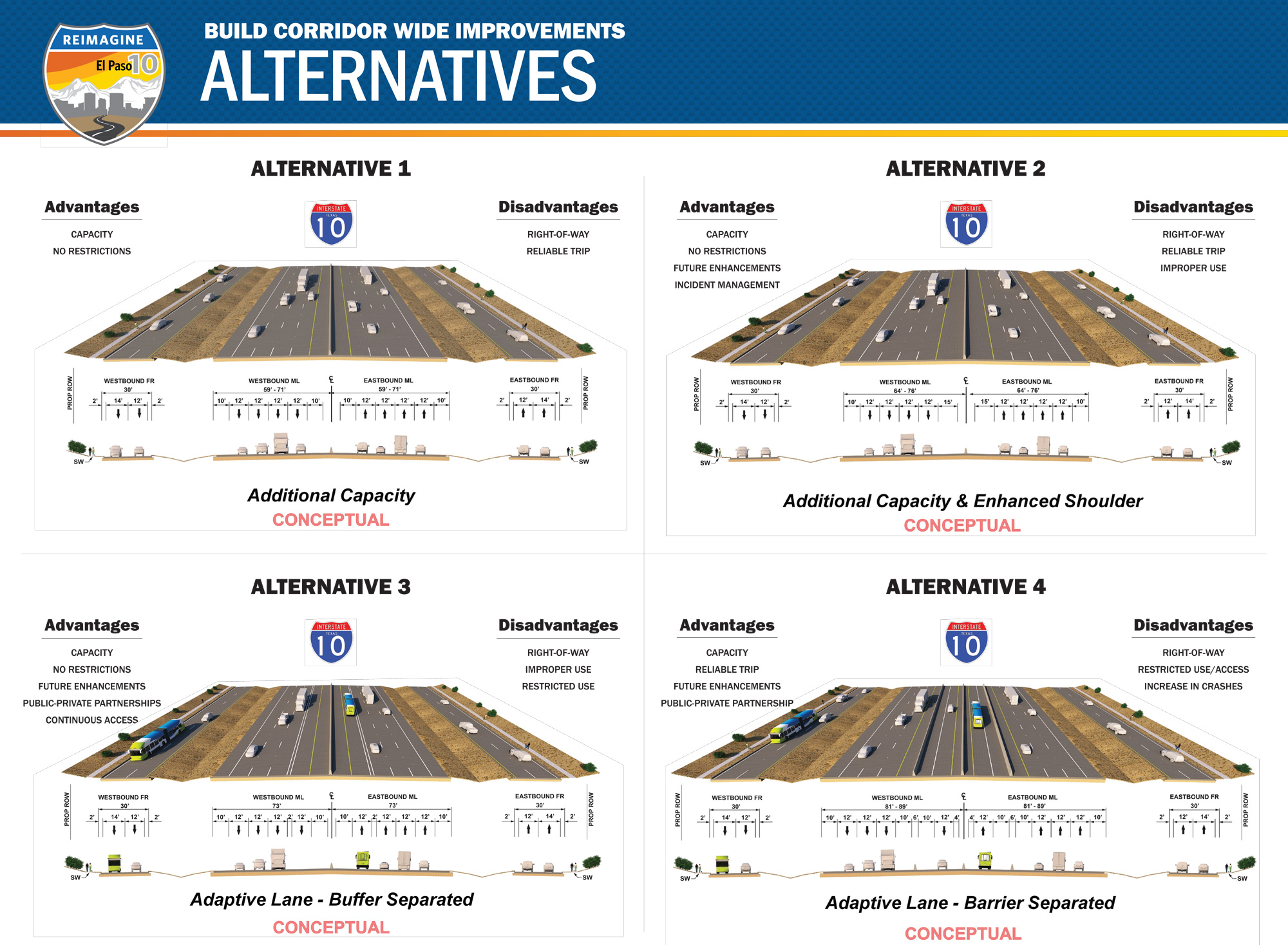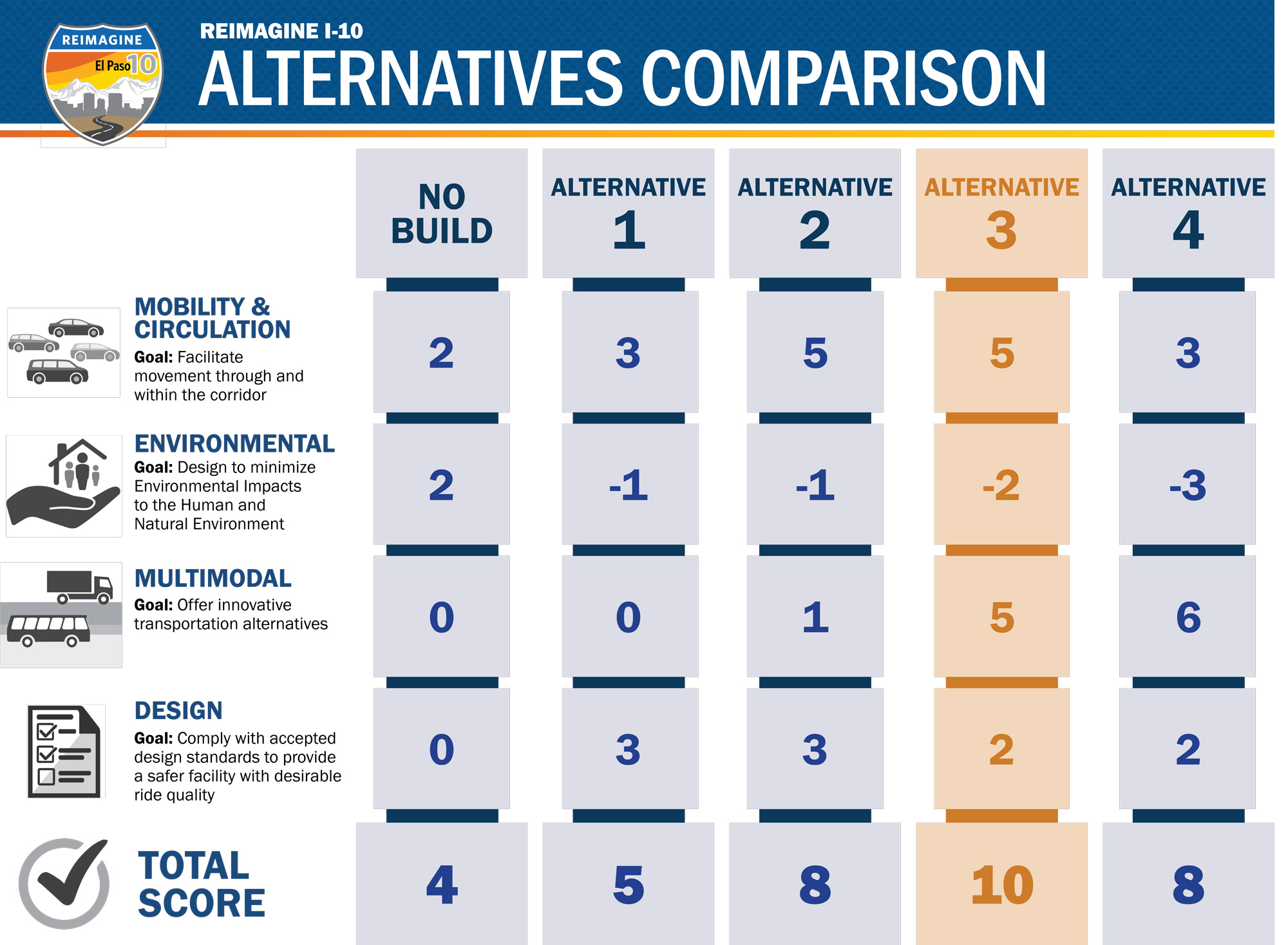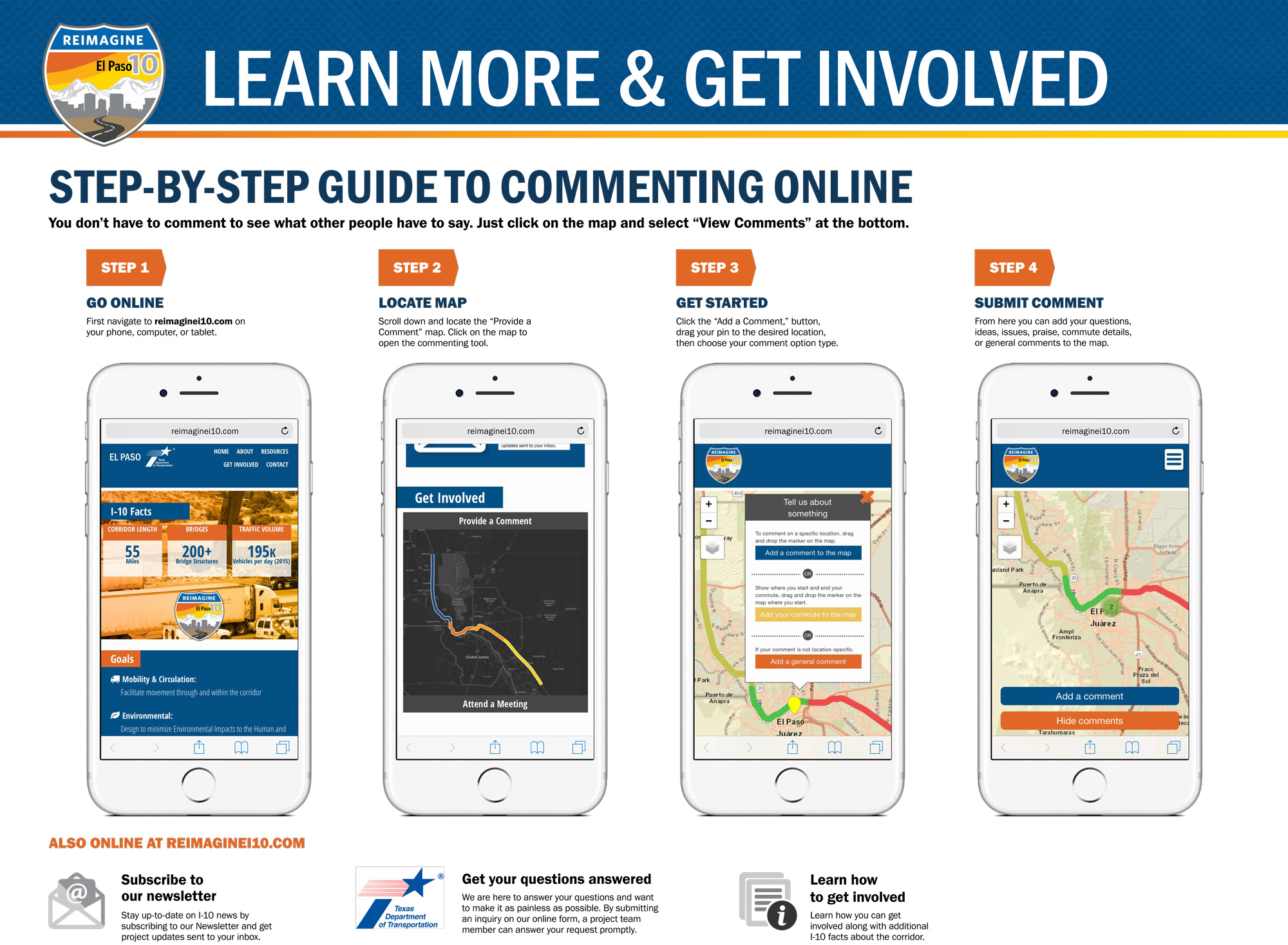Reimagine I-10
TxDOT conducted an advanced planning study for the I-10 corridor from the New Mexico State line south to FM 3380 (Aguilera International Highway). The purpose of the study is to analyze and evaluate the current and future transportation needs for the I-10 El Paso corridor through El Paso. This study, called Reimagine I-10, emphasized the need to reimagine how the corridor operates today and develop unique solutions for the El Paso area that will serve the region well into the future.
The result of the Reimagine I-10 Corridor Study was the identification of the need for improvements in the corridor, including potential operational improvements, the proposed implementation of a corridor-wide Adaptive Lane strategy*, and the identification of technology opportunities to prepare for the future. As a result of this study, four segments were identified for further analysis. Learn more about results from the study, current and future projects in each of these segments, and how to stay informed and involved in current projects by clicking on the segments below.
- Segment 1: Northern Gateway
- Segment 2: Downtown 10
- Segment 3: Airport
- Segment 4: Southern Gateway
The El Paso I-10 corridor – the backbone of El Paso – is an important part of the interstate and national highway system, as well as the economy nationally and internationally.
According to the Texas-Mexico Transportation Master Plan 2020, the El Paso area has seen a 162% increase in export growth since 2010. 32% of all vehicle miles traveled in El Paso are on I-10 in El Paso according to Destino 2045.
Initial traffic forecasts identified that by 2042, more than 300,000 vehicles are projected to drive on I-10 in daily commutes according to the Reimagine 1-10 Corridor Study.
By the year 2045, more than 4,300 trucks are projected to cross the U.S./Mexico border daily at one of the five local ports of entry.
*An adaptive lane strategy involves designing roadways with designated lanes for specific modes of transportation, such as transit vehicles, trucks, electric vehicles, and more. See more about adaptive lanes in the Corridor Study Information section.
Study area and overview
Study Area
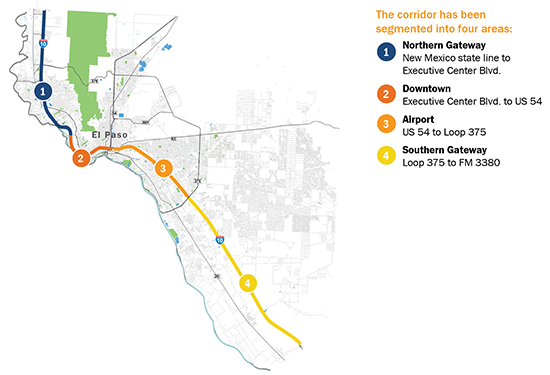
Study goals and objectives
Goals and objectives for the corridor study were developed through collaboration with TxDOT, stakeholders, and the public. The project team developed the overall project goals and evaluated the alternatives based on those goals, all while incorporating public feedback throughout the process.
Mobility & Circulation
Facilitate movement through and within the corridor.
Design
Comply with accepted design standards to provide a safer facility with desirable ride quality.
Environmental
Design to minimize Environmental Impacts to the Human and Natural Environment.
Multimodal
Offer innovative transportation alternatives
Value
Ensure that improvements are sustainable and balanced with respect to costs and benefits.
Technology
Leverage advancing technologies to address corridor issues.
Corridor study information
The Reimagine I-10 Corridor Study involved traffic analysis to determine how the existing I-10 corridor operates, as well as how future traffic volumes would be impacted if no changes or improvements were made to the corridor. Additional analysis was conducted to locate where future growth is anticipated in the region as population and employment are projected to increase in the coming years. With additional people and jobs, the roadway would experience greater congestion.
Segments overviews
See the below videos to understand how the corridor looks now, how it would look in the future if no improvements are made, and how it would look in the future if improvements were made. You can also check out the Level of Service graphic to see how these different alternatives would measure up when tested!

